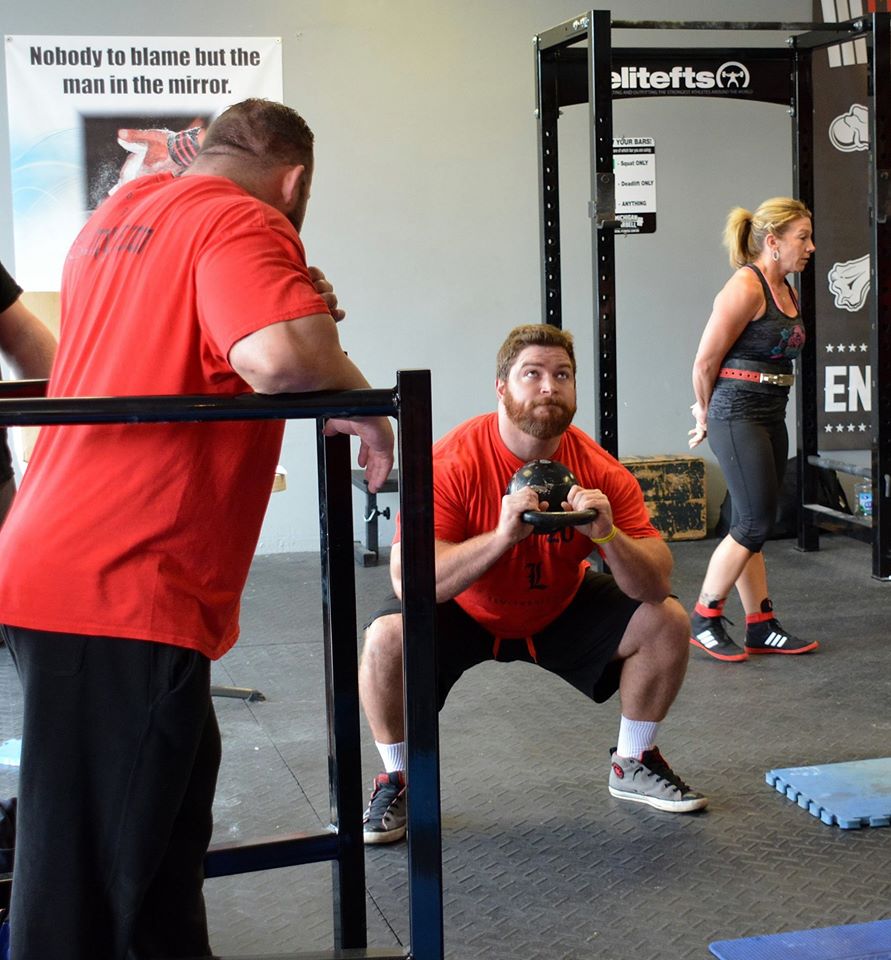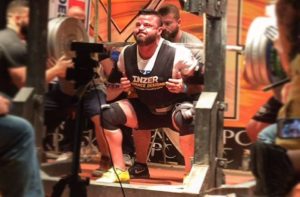
27 Jun Five Potentially HUGE Squat Mistakes
By: Brian Carroll
I see people do these things all of the time. Even if you fix one of the five, you could make a huge improvement right away.
1. They start the squat off WRONG in a few ways. Broad topic, right? Their knees shoot forward like they are trying to do some form of dance move or sissy squat. Most of the time, a lifter’s shin to knee will not be perfectly perpendicular and will track some but most people never sit their ass back, their squats never get to depth and their knees are way out over their toes. I HIP HINGE. Think of a 1-arm kettle bell swing FIRST, then I sit back and open up. This goes for the raw or equipped lifter. Most every good squat starts with a hip hinge and I haven’t even touched on the potential back injury ramifications of a squat gone wrong. Trust me, I know, I’m living the ramifications NOW.
2. They squat FAR TOO wide which kills their power, wrecks their hips and hurts their ability to hit depth. It also leaves them with absolutely zero stability. Nobody else on the planet is Chuck V. He is one of the best squatters, if not THE BEST that has ever been. With that said, he is built to squat super wide. Long femurs, hyper mobile hips and a freak in general. Chances are you are not Chuck or even close. I like people to start out at a medium to close stance, then go from there. In most cases they won’t need to go too much wider. Of course this really depends on many factors – build, height, leverages, limitations etc.
3. They chop everything in training 3” high, then can’t get down in the meet and wonder what the hell is going on. Now I understand that everyone has trouble with the lighter weight – especially if you are wound tight like me, but once you reach 75% you should be able to make depth or at least parallel. As I’ve hit over and over in articles and the book “10/20/LIFE”, hyper mobility is NOT A GOOD THING but neither is being too tight. Find the line and toe it. Gear does play a factor with this but equipped or not – as a general rule of thumb (and applies to me too) you should be approaching depth in the 75% range.
4. Looking down during the unrack or during any part of the squat. Many people have their own opinions on this and make it work for them. I personally look up, almost toward the ceiling but more so where the wall would meet the ceiling in front of me. Dr. Stuart Mcgill agrees with this opinion and that says a lot concerning optimal position and spine health. When a squat starts to slow mid-way-up or so, I really drive my head up and chest up, push my heels through the ground and most importantly I keep the lifters wedge with lats locked down and TIGHT – in other words, I keep my arch tight. A lot of time when the bar slows down, it has a tendency to roll up your back and make you get on your toes. This can cost you a squat that you could have easily finished. This is due to a loose upper back a lot of the time. It’s not always the case but it’s the likely culprit.
5. Not getting tight before they unrack a big weight. Most lifters don’t pay attention to where they are lined up on or under the bar, where their foot placement is relative to their stance and they just slam it out of the rack and start shaking like a dog shitting razor blades. This will either put them on their toes, fall back their heels or drop their chin. For any lifter it’s all about the little things that make the biggest difference. I like to make sure to apply some pressure (about 20% or more) to the bar before I unrack it. This goes for walkout or monolift. I like to push into the bar as I’m setting up and do a mental check of my body tightness. Once I have concluded that everything is in place, I will then apply the other 80% and forcefully, but under control – rip the bar out of the racks with an arched back and heels pushed through the ground. There’s a fine line between unracking too crazy and aggressive and being too polite with it. As always, make it your own.
GET THE 10/20/LIFE EBOOK HERE!
Brian Carroll
Latest posts by Brian Carroll (see all)
- Protected: -Header Image Post Template 2024 - April 18, 2024
- Brian Carroll X Professor Stu McGill full interview 2024 - April 16, 2024
- Protected: -Video Post Template 2024 - April 15, 2024






Sorry, the comment form is closed at this time.